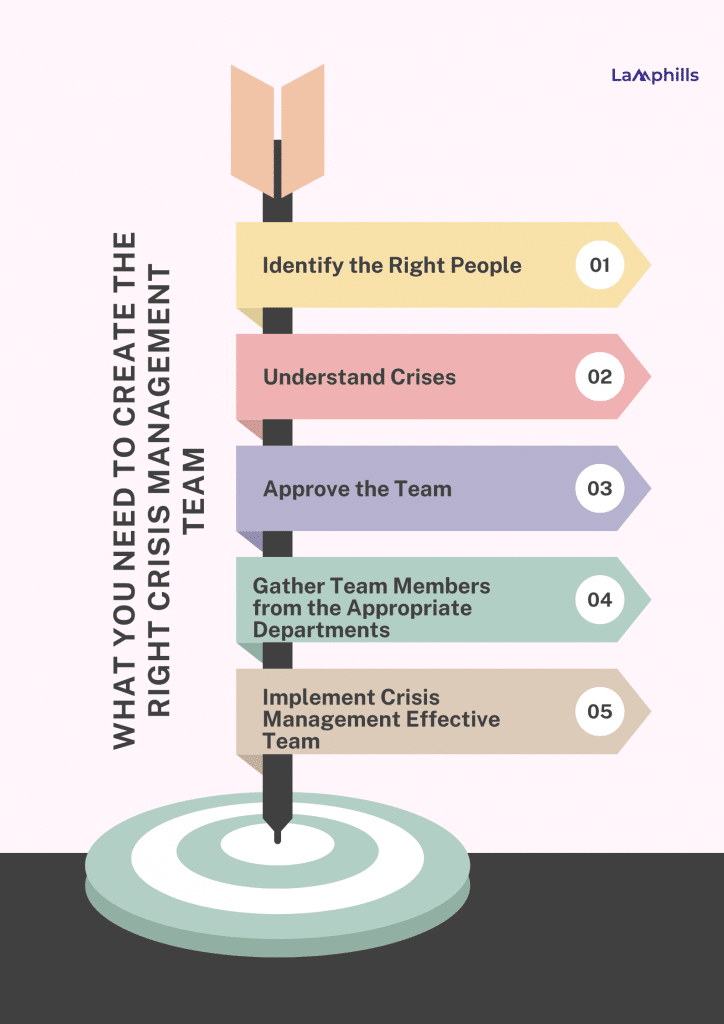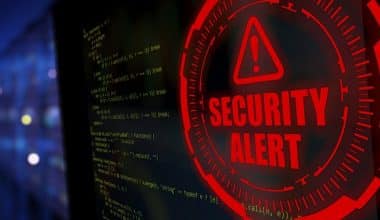Now more than ever, businesses have to deal with unexpected occurrences, ranging from natural catastrophes and cyberattacks to public relations errors and operational setbacks. And the thing is, they can strike at any time, endangering your brand reputation, financial stability, and even survival. The good news is that with effective crisis management, you can predict, prepare for, respond to, and recover from crises.
Companies with a strong crisis management team are more likely to be successful in the aftermath of a disaster. But how do you build or create an effective crisis management team?
Having helped several small and large businesses set up one successfully, I have encapsulated everything you should know in 6 steps.
As always, I’ll start with the basics, examining the various types of crises that businesses can experience, the significance of a well-defined crisis management plan, and the important aspects of effective reaction and recovery. We can then work our way down to the 6 key steps.
Let’s get started.
Key Takeaways
- Effective crisis management is critical for a quick recovery and long-term corporate resilience
- Crisis management is crucial for organizational resilience and quick recovery from unexpected events
- An effective Crisis Management Team (CMT) is essential for planning and responding to emergencies
- Proper crisis management involves thorough planning, risk analysis, and regular plan updates
- CMT should include representatives from various departments with clearly defined roles
- Understanding different types of crises (e.g., organizational, financial, natural) helps in better preparation
- Effective crisis management relies on clear communication, coordination, and collaboration
What is Crisis Management?
Crisis management means developing and implementing methods to deal with unexpected events while minimizing their impact on your organization. This covers creating specific action plans, establishing clear communication among all stakeholders, and maintaining business continuity to avoid financial and operational disruptions. Effective crisis management is pretty crucial for a quick recovery and long-term corporate resilience.
On the other hand, effective communication of your crisis management techniques is essential to ensuring that everyone involved understands their responsibilities during a crisis. Without such a plan, your business’s commercial operations could be interrupted, reducing profitability and sustainability. Again, a crisis can occur at any time and frequently when you least expect it, which is why crisis management is an important element of any business plan.
So what then is a crisis management team?
What is a Crisis Management Team?
A crisis management team (CMT) is a collaborative group that plans responses to future emergencies. It is responsible for carrying out and organizing responses during an incident or catastrophic occurrence.
However, to be most effective, a CMT must be willing to cooperate and committed to finding companywide solutions.
How to Create an Effective Crisis Management Team
Here are some helpful tips and steps I and my company always implement each time we are consulted to create effective crisis management teams.
#1. Choose Crisis Management Platform
Why should you choose a crisis communication platform? It is simple: to help your crisis management teams notify and update staff when a crisis occurs. Internal and external communication must be simplified and efficient to guarantee that strategies are implemented successfully.
#2. Perform Risk Analysis
The second stage in crisis management is identifying potential business hazards. A crisis may be natural or technical. It is very crucial to conduct a thorough risk assessment to identify the most sensitive risks and determine the best strategy to respond to such emergencies.
#3. Create Crisis Management Teams
Now, you can create a team that is completely responsible for establishing a crisis management strategy. Identify each team member’s tasks and responsibilities to ensure that you have a strong crisis response strategy and that it is successfully communicated.
#4. Identify Crisis Triggers
You must clearly define the triggers that signify the beginning of a crisis. These triggers can help you properly launch your crisis response strategy and respond quickly.
Meanwhile, by adopting this template below, your organization will be better prepared to limit the impact of crises, safeguard your stakeholders, and maintain your company’s reputation and operations.
Crisis Management Plan Template.pdf
#5. Review and Update Your Crisis Management Plan Regularly
Your demands and the dangers you face as a business are always changing. It might even feel like the best term is evolution. As a result, you must examine your ideas frequently and make any adjustments. Make sure you’re up to date on the best practices and latest standards for business continuity and crisis management procedures.
#6. Prepare a Backup Plan
Once you’ve created your crisis management strategy, it’s always a good idea to have a backup plan. It ensures that you have alternate risk-mitigation tactics and plans in place in case your primary plan fails.
What You Need to Create the Right Crisis Management Team
Now that you know the steps, I have outlined what you really need to create the right team for the purpose of crisis management.

#1. Identify the Right People
The ideal candidates for a crisis management team are often senior managers’ direct reports. Another thing to keep in mind when searching for individuals who are a good match for the role is to search for employees who stand out during business continuity drills.
Most business owners know someone calm and capable of working effectively with others. Consider asking around each department for individual input.
#2. Understand Crises
Before developing a successful CMT, you should understand crises and how they affect your organization.
It is not only the responsibility of your management team to understand what a crisis is; you, everyone in your organization, and even your vendors must do so. They should also understand how crises impact your company, clients, stakeholders, and operations. As a result, spending the time to comprehend events is critical for preparation.
Remember we talked about triggers earlier? Just to make things more seamless for you, here is a checklist to keep you on track
Crisis Trigger Identification Checklist.pdf
#3. Approve the Team
To complete the process, ensure you and senior leadership approve the crisis management team. Political reasons can occasionally lead to the appointment of a high-ranking individual, even though they are not the best fit.
A lower-ranking employee from that area might be added; just make sure they have the necessary abilities to compensate for the lack of knowledge and traits.
#4. Gather Team Members from the Right Departments
In general, you’ll need a team that includes one representative from each department, such as information technology, human resources, communications, and so on.
Your team may look something like this.
- Team leader: Makes company-wide decisions, similar to a senior executive.
- Financial director: Oversees financial arrangements and disbursement of funds. Keeps track of the cost of the crisis and evaluates the financial impact of each calamity.
- Legal adviser: Advises on the potential legal consequences of corrective actions.
- Media spokesperson: Communicates critical information without revealing proprietary information.
- HR leader: Handles human resources issues and helps information officers reach affected persons and their families.
- Security specialist: Someone from outside the business who teaches the team how to handle individual situations and provides advice during an emergency. Also leads team debriefings following an issue.
This list is not exhaustive, but it covers the basics.
#5. Implement Crisis Management Effective Team
Leadership is crucial during a crisis. As a result, you’ll need a team leader who isn’t you or the CEO and has a thorough understanding of the business. The leader should also be loyal to your organization.
This may be easier said than done. I carried out some research, and according to a survey, 24% of respondents identified leadership effectiveness and decision-making as their most significant obstacles in crisis management.
When selecting a leader, go with someone who can collaborate with employees at all firm levels. This person should have complete power over facilitating team meetings and consistently foster companywide collaboration.
Types of Crises
The different types of crises may not do much for you now. I mean now that you know the steps to creating or building on, what you should be looking out for and you probably have one in place.
The truth, however, is that you’d be making a big mistake if you ignored this. While being assured that your team will do a good job managing crises should be at the top of your mind as a result of an effective selection process, you and your team would also know the kind of crises you’re dealing with when they arise.
Here are the most popular types:
#1. Organizational Crisis
A common yet difficult problem that most businesses face is an organizational crisis. When this type of crisis occurs, your entire organization could be jeopardized.
There are several types of organizational crises, including the crisis of lying. If an employee or someone representing your firm delivers false information about your products or services, it can harm your organization’s reputation. To avoid damaging your company’s reputation, you must have an effective crisis management policy for dealing with workers who engage in such behavior.
Management misconduct is another type of organizational crisis that you may encounter. It could be organizational misconduct, such as selling counterfeit items, engaging in unlawful operations, or selling customer information without their permission. This type of crisis can be quite damaging to your organization, so you must handle it carefully to keep your business viable.
#2. Personnel Crisis
Personnel crises refer especially to human resources. There are several types of personnel crises that you must include in your crisis response plan.
Your employees reflect your company. As a result, you must select and train your staff to uphold your brand while also ensuring that they act by your company’s values. Your employees must behave themselves responsibly in their personal lives, as their actions might have a direct impact on your company’s reputation.
Employees must be aware of the potential consequences of their actions and behaviors, even when they are not on business grounds. Furthermore, relevant stakeholders should provide feedback on how to mitigate this type of danger to the organization’s reputation.
#3. Financial Crisis
Financial crises are among the most typical issues that businesses encounter daily. This crisis occurs when a large sum of money may be lost if the risk is not managed swiftly and properly.
When businesses lose customers, they are experiencing a financial crisis. Without clients, they lose their revenue-generating potential. If the financial loss is not managed properly, the organization’s reputation could suffer, and the company could lose its market position.
It could also be badly impacted by shifting market trends, or perhaps your company is unable to cope with inflation, resulting in a substantial financial loss that leads to bankruptcy.
If you are struggling financially, you may lose the ability to successfully serve your clients and your reputation. A lack of resources also puts your organization at danger of losing top people, who will seek better opportunities with greater financial security.
#4. Natural Crisis
Organizations may have to deal with a natural disaster. Certain firms are more vulnerable to natural disasters depending on your location than others. Unfortunately, you can’t foresee when it will strike. However, when a crisis strikes, it can significantly impact your company’s operations and continuity.
Effective and planned crisis management is required in situations like this. Whether you’re dealing with a typhoon, hurricane, tornado, or something else, crisis management enables your company to respond and recover more quickly than if you didn’t have a crisis management plan.
Crisis prevention is an essential component of effective crisis management solutions. Your ability to endure the effects of a natural disaster can help you prevent business interruption. Early warning systems for natural disasters are one example. These systems allow you to get your business up and running as soon as feasible.
#6. Human-Caused Crisis
A human-caused crisis is defined as any disruptive occurrence that harms your business as a result of human error or a purposeful attack. For example, a cyber attack is conducted with the malicious goal of stealing data or consumer information for personal gain. Make sure to plan for this type of crisis and human mistake to keep your firm running even during a tragedy.
Finding acceptable solutions is also an important aspect of any crisis management plan. You want to ensure your company is not left vulnerable during a crisis like this.
#7. Technological Crisis
Many businesses rely on technology to keep their operations functioning, regardless of whether they are in the technology industry. A technology breakdown, such as when your servers go down or your computer software problems, is a common example of a technological crisis. An industrial accident could also be an example of this type of catastrophe.
Assume you run an e-commerce store. Suppose your servers fail, and your website is unavailable for several hours. In that situation, you could lose thousands of dollars in income due to clients being unable to access your website during downtime.
The best approach to deal with technical failure is to have a backup system. If your server is down, keep your website up and running and continue to serve your clients as usual.
What is the role of the crisis team?
The role of a crisis team is to detect early symptoms of a crisis, identify possible dangers and issues, assess the impact of the crisis, and develop and implement an action plan. At the basic level, these are all important aspects of crisis management.
What are the five functions of the crisis team?
The crisis management team often divides its tasks and responsibilities into five functions: management, operations, intelligence, logistics, and finance.
What are the 4 Cs of crisis management?
The journey to rehabilitation is guided by four basic principles of crisis management known as the 4 C’s: communication, coordination, continuity, and collaboration. These ideas lay the groundwork for creating robust and flexible catastrophe response tactics.
What are the 5 areas of crisis management?
Businesses mostly focus on five aspects of crisis management: risk assessment and planning, crisis communication, incident response, business continuity, and crisis recovery. Businesses focusing on these areas have a better chance of surviving and prospering even during a crisis.
What are the 3 Cs of crisis management?
The 3 Cs of crisis management are simple. They include coordination, communication, and collaboration.
Related Articles
- 10 Essential Strategies For Effective International Brand Management
- How to Deal With Social Media Crisis Like a Pro: Best Strategies
- Top 10 Online Reputation Management Tools for Businesses in 2024
- How to Write a Press Release for Company Crisis: 10 Examples to Help You Get Started (+Templates)
- Relevance Of Enterprise Performance Management






